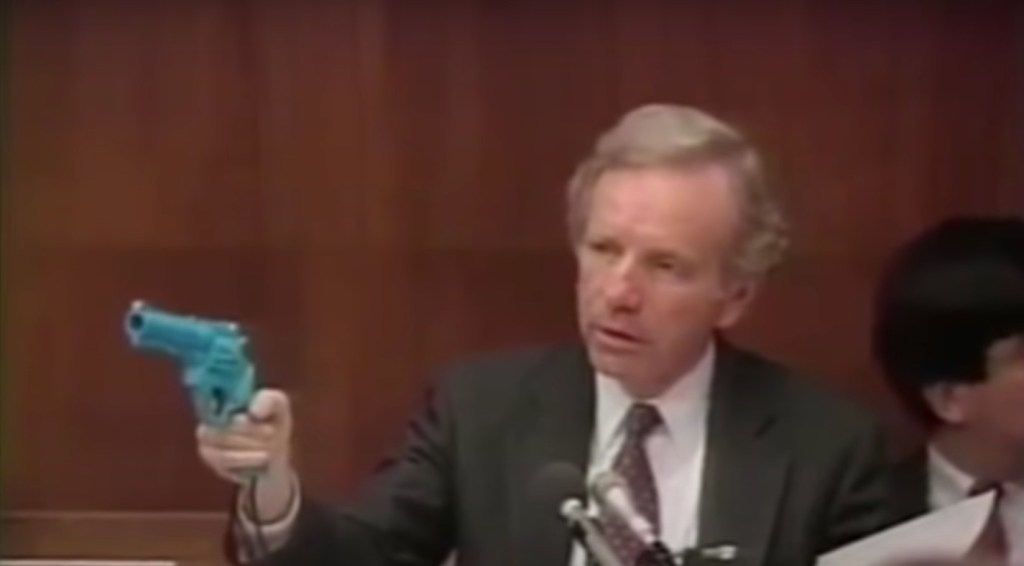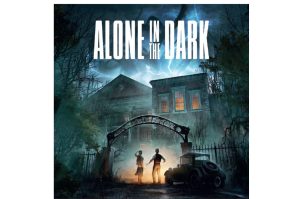Twenty-nine years ago, Congress held hearings on violent video games that descended into farce. The absurdity was best captured by Senator Joe Lieberman, who at one point pulled out a plastic arcade gun and began waving it at the witnesses (he didn’t shoot them, thankfully, lest he have to insert more quarters). Lieberman, who chaired the hearing, said he was deeply concerned about violence in video games. Less so about violence in Iraq, where he voted to send American sons and daughters nine years later.
Yet while the hearings have been widely ridiculed, they did give us something valuable. Fearful of government intervention (and of losing health points to Senator Lieberman), the video game industry created the Entertainment Software Rating Board. It’s the ESRB that today assigns those content ratings you see on games: T for Teen, M for Mature, and so on.
The ESRB is an example of corporate self-regulation done right, and its debut largely quelled the uproar over bloody games. Today, video game violence is one of those issues that reeks of the 1990s, like flag burning and prayer in schools. Social science has largely put the matter to rest, showing that on-screen carnage does not lead to actual carnage. If it did, the world over would be awash in mass shootings, not just the United States.
Still, after the Uvalde massacre, the issue was inevitably going to come up again. And so it did last weekend when Bill Maher accused Hollywood of using one hand to shake a fist at the NRA and the other to blow away CGI bad guys with a Glock. Maher noted that we’re obsessed with slapping trigger warnings on everything from domestic violence scenes to smoking. Yet somehow Janie’s-got-a-gun-style silver-screen revenge fantasies are the one form of voyeurism we refuse to think affects real-world behavior.
He has a point. While it’s true that on-screen violence doesn’t lead to mass shootings, it’s also true that mass shooters are often obsessed with on-screen violence. Yet even if Maher is overstating the connection — and I think he is — there’s another question worth asking here. Setting aside the issue of culpability, is endless violent content good? Is it right that a 15-year-old should spend hours mowing down baddies with a plasma rifle or watch John Wick slaughter half the human race? That’s all the more relevant given how far movies and video games have come since Joe Lieberman first took aim.
Video games today have far better graphics technology than they did back in the ’90s, which lets them depict far more sophisticated scenes. So while Lieberman’s committee was shown a so-called fatality from the game Mortal Kombat in which a blurry character got his head pulled off, the fatalities in more recent Mortal Kombat entries are, er, slightly less subtle. Or consider 1992’s Wolfenstein 3D, which had the player gunning down poorly rendered Nazis. The newest Wolfenstein game features a scene in which a woman decapitates another woman with an ax. Then she grabs the head and dances around with it. Then she rubs the head in her daughter’s face. Then she throws away the head and a giant mech stomps on it.
We’ve all been there, my dudes!
Movies differ slightly in that they have a longer history of depicting stark brutality. From the slasher films of the 1980s to Scarface‘s run-in with the Hays Code, gunfights and gruesomeness are a storied part of Hollywood’s past. Yet what is new is how media — particularly TV — have pushed violence further into the mainstream. Streaming services like Netflix and Hulu, and premium channels like HBO and Showtime, have eclipsed the broadcast networks as go-to television. And part of the so-called premium experience is that you get to see graphic content that wouldn’t have stood a chance on even CSI-era CBS.
So when the latest season of Stranger Things debuted just days after Uvalde with its opening scene a massacre of children, it seemed like some kind of cosmic nudge. The average American child watches 200,000 acts of onscreen violence before he turns 18. And while that doesn’t mean kids are about to start roaring “get over here!” and plunging spears into each other, it does risk desensitizing them to the real thing. It’s a strange culture that cringes over a mass shooting, trembles over what that scene must look like…and then flips on just such a scene on Paramount+. Or cools down by reenacting one on an Xbox game. Yes, this is and should be legal, but does it make sense?
There are two objections that are often raised here. The first is: if you don’t like violence, then don’t watch it! Fair enough, and following Uvalde, I find myself making that choice more often. Though given how pervasive violent media is, it can be difficult to avoid. Not every child actively chooses to watch every one of those 200,000 slayings, after all. The second objection is: art has to be free to depict life, and life can be violent. This is true. The human condition is not Mayberry. Sometimes art needs to portray that which is dark, whether Schindler’s List or Hieronymus Bosch.
Yet there’s a difference between meaningful violence and gratuitous violence, using it to tell a story and shoehorning it where it doesn’t belong merely to titillate. Because we have so much of the latter, it’s created a bizarre juxtaposition where we can watch news about a horrific real-life shooting, then change to a violent movie whose message is: none of this matters. Or even: look how this solves problems. Gunplay as DIY! As crime spikes, maybe that’s something we should think more about.
As for Joe Lieberman, he sounds less worried about video games than he used to be. Then again, maybe there’s a reason for that. I imagine him holed up in a basement somewhere, his face wan in the glow of a TV, drinking Mountain Dew and mashing buttons as he pushes through just one more level of Gears of War before bed.


















